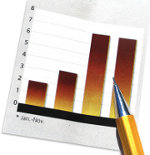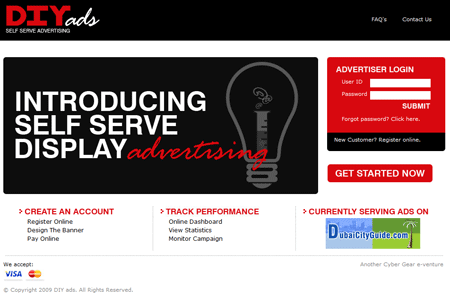As several regional reports and studies have shown, online advertising in the Arab world is pretty much still in its infancy, with it only representing around 1% of total advertising spends in the region. Search advertising which is a relatively newer form of online advertising has just started making inroads into the market over the past couple of years, and it’s interesting to have some insight into how things are looking with it, and what kind of growth it is seeing.
Google of course is the main player in the search advertising market worldwide and in the region, and according to Husni Khuffash, Google’s Country Business Manager, Google search advertising is witnessing a double-digit growth in the Arab World, despite the reports of a worldwide decline in the performance of search ads.
Meanwhile, David Sheridan, CEO, Neo Digital, commented that search ads currently consist well under 10 per cent (5-6%) of total online advertising budgets, which in turn constitute only around one per cent of the total ad spend.
Sheridan, however, agrees that search advertising is seeing a double-digit growth in the region, with Neo Digital seeing more than 10 per cent growth in online advertising based on pay per click.
In fact, he said search ads constituted 15 to 20 per cent of the total agency expenditure, with some clients spending about 10 per cent of their online budgets on Google search display ads, and between 15 and 20 per cent on text search, varying according to each client’s needs.
However, he also thinks that search ads aren’t probably the best way to advertise to a specific targeted audience, and that more specific advertising is still better placed on specific portals.
An important point he makes is that one of the main reasons why the search ad market is not so big here compared to other markets is because those are heavy e-commerce markets as opposed to the Arab region, where pay per click is more intended for lead generation and directing traffic to websites, not to drive direct sales.
This, I think, not only applies for search advertising but online advertising in general. As long as businesses don’t see the results of their online campaigns translated into conversions and revenue, their investments in online advertising in general will be limited. The only way for them to start seeing those conversions and that revenue rolling in though if for them to work on more elaborate online strategies and start venturing into e-commerce.
Most digital advertisers in the Arab region are still government, telecommunications and automotive; with smaller companies that search advertising should appeal to not being very active.
Expectations are that the search ad sector will maintain a steady growth, just like online advertising as a whole, despite the almost untapped e-commerce market in the Arab World. But, in my opinion, it will only take off hugely when the internet starts being perceived as a really important sales channel by companies.
[Via: Business 24-7]
 Noqoush Mobile Media Group, an Arab mobile advertising and mobile media monetization startup, announced concluding its first 3 million dollar investment round a couple of weeks ago.
Noqoush Mobile Media Group, an Arab mobile advertising and mobile media monetization startup, announced concluding its first 3 million dollar investment round a couple of weeks ago. A recent survey by the market research company
A recent survey by the market research company  More Middle East business people used mobile devices to hook on to the internet last month, compared with February 2007, while fewer used computers, a just released survey showed.
More Middle East business people used mobile devices to hook on to the internet last month, compared with February 2007, while fewer used computers, a just released survey showed.

 According to estimative numbers released by Tunisian market research firm
According to estimative numbers released by Tunisian market research firm  Algeria has recorded a 300% increase in internet advertising during the third quarter of this year, compared to the same period of 2007, reports Algerian daily
Algeria has recorded a 300% increase in internet advertising during the third quarter of this year, compared to the same period of 2007, reports Algerian daily